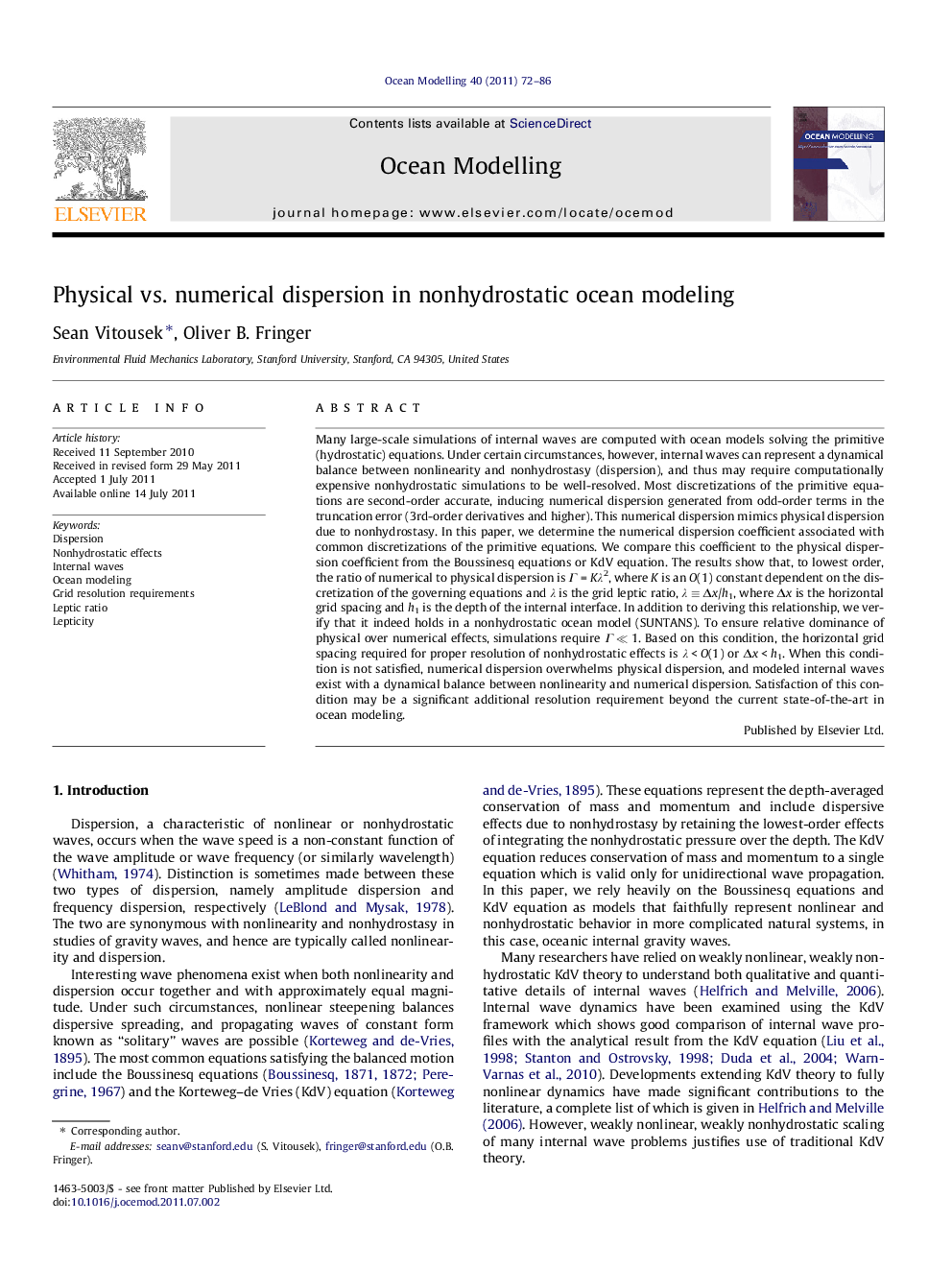| Article ID | Journal | Published Year | Pages | File Type |
|---|---|---|---|---|
| 4552320 | Ocean Modelling | 2011 | 15 Pages |
Many large-scale simulations of internal waves are computed with ocean models solving the primitive (hydrostatic) equations. Under certain circumstances, however, internal waves can represent a dynamical balance between nonlinearity and nonhydrostasy (dispersion), and thus may require computationally expensive nonhydrostatic simulations to be well-resolved. Most discretizations of the primitive equations are second-order accurate, inducing numerical dispersion generated from odd-order terms in the truncation error (3rd-order derivatives and higher). This numerical dispersion mimics physical dispersion due to nonhydrostasy. In this paper, we determine the numerical dispersion coefficient associated with common discretizations of the primitive equations. We compare this coefficient to the physical dispersion coefficient from the Boussinesq equations or KdV equation. The results show that, to lowest order, the ratio of numerical to physical dispersion is Γ = Kλ2, where K is an O(1) constant dependent on the discretization of the governing equations and λ is the grid leptic ratio, λ ≡ Δx/h1, where Δx is the horizontal grid spacing and h1 is the depth of the internal interface. In addition to deriving this relationship, we verify that it indeed holds in a nonhydrostatic ocean model (SUNTANS). To ensure relative dominance of physical over numerical effects, simulations require Γ ≪ 1. Based on this condition, the horizontal grid spacing required for proper resolution of nonhydrostatic effects is λ < O(1) or Δx < h1. When this condition is not satisfied, numerical dispersion overwhelms physical dispersion, and modeled internal waves exist with a dynamical balance between nonlinearity and numerical dispersion. Satisfaction of this condition may be a significant additional resolution requirement beyond the current state-of-the-art in ocean modeling.
Highlgihts► Ratio of numerical to physical dispersion for ocean models is Γ = Kλ2. ► Ocean models thus require λ < O(1) or Δx < h1. ► When condition is not satisfied, numerical dispersion overwhelms physical dispersion. ► Satisfying this condition is a significant additional resolution requirement.
